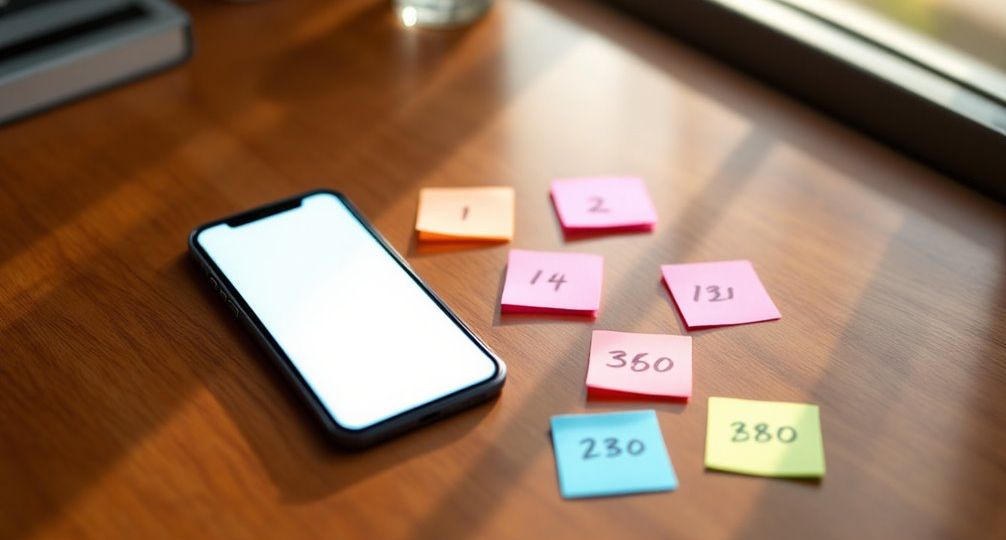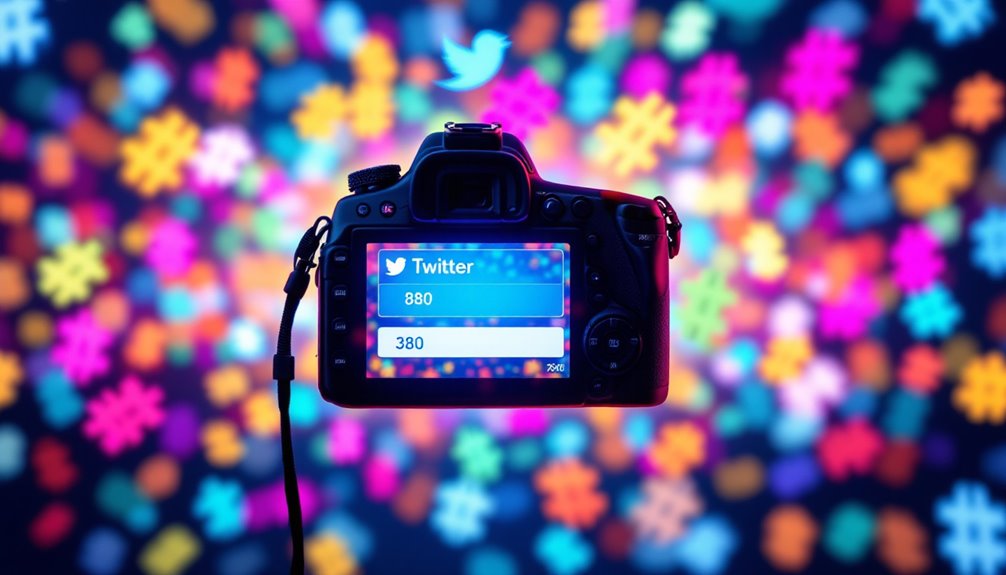
What is the ideal character count for a tweet?
You might not know that tweets under 100 characters can lead to a 17% boost in interactions. This isn’t just about keeping it short; it’s about crafting the perfect blend of clarity and engagement. How do you achieve this balance without sacrificing your message? Consider the role of hashtags, visuals, and even the choice of words. Are you maximizing the impact of your tweets by using concise language and strategic elements? Let’s explore the nuances of tweet length and discover if there’s a sweet spot for capturing your audience’s attention.
Key Takeaways
- Tweets under 100 characters achieve 17% higher engagement rates than longer tweets.
- Medium-length tweets, ranging from 70-110 characters, generally perform best for engagement.
- Ideal tweet length for maximum engagement is often between 71-100 characters.
- Keeping tweets concise and clear enhances readability and shareability.
- Effective tweets aim for a 6th- to 7th-grade reading level for broader accessibility.
Understanding Twitter’s Character Limit

Twitter’s character limit has been a defining feature of the platform since its inception. Initially set at 140 characters, it aligned with SMS text message limits, reserving 20 characters for usernames and commands. This decision shaped Twitter’s concise communication culture. Over a decade, users navigated this character limit history by creatively editing posts, though it often proved time-consuming and restrictive, particularly for English speakers. Curiously, languages such as Chinese, Japanese, and Korean experienced fewer constraints due to their dense character scripts. In November 2017, Twitter doubled the limit to 280 characters, responding to user demand for more expressive freedom and balancing language disparities. This change marked a significant evolution, with user engagement adapting swiftly. The prevalence of tweets near the new limit surged, enhancing user satisfaction and maintaining a familiar timeline experience. The maximum character limit for Tweets is 280 since 2017, up from the previous limit of 140 characters. To manage your tweets effectively, you’ll find that Twitter lacks a built-in character counter. Instead, leverage character count tools like Originality AI and Thread Creator to guarantee precision, especially with emojis and links that affect character values. These tools help you navigate Twitter’s evolving landscape and maximize your communication strategy without breaching limits.
Optimal Tweet Length for Engagement
When crafting tweets, aiming for an ideal length can greatly boost engagement. You want to hit that sweet spot of 71-100 characters. This range guarantees your tweet is concise yet informative, sparking more retweets and replies. That’s because it gives retweeters room to add their comments, enhancing the conversation. Shorter tweets—under 100 characters—see a 17% higher engagement rate, making them a powerful tool in your digital strategy. Medium-length tweets between 70-110 characters perform best for overall engagement, according to research.
Strategically, timing your tweets to match your audience’s peak activity period can amplify their impact. Coupled with effective audience targeting, you’re set to maximize engagement. Keep your language straightforward. Aim for a 6th- to 7th-grade reading level to boost retweetability, using simple sentences and avoiding slang. This makes your message clear and accessible. Don’t forget the power of hashtags. Limiting yourself to one or two short hashtags can increase engagement by 21%. But remember, more than two can clutter your message and reduce its effectiveness. Mastering these elements will help you create tweets that not only reach your audience but resonate with them, driving innovation and interaction.
The Impact of Shorter Tweets

Shorter tweets pack a punch when it comes to engagement. With a character count under 100, you can achieve 17% higher engagement rates. Why? Because short tweet benefits include ease of readability and comprehension.
Twitter’s fast-paced environment thrives on concise messaging, perfectly catering to users’ dwindling attention spans, which average just 8.25 seconds.
When you craft a concise tweet, you’re not just saving space; you’re optimizing for retweetability. Medium-length tweets, particularly those between 71-100 characters, are retweeted more often.
Adding one or two hashtags? That’s a strategic move that can up your engagement by 21%. Users on Twitter, especially those seeking quick news bites, appreciate content that’s easy to consume and share.
Crafting clear, effective messages in this brevity guarantees your main point isn’t lost amid fluff. Short tweets naturally reduce errors and boost clarity, making them more likely to resonate. Only 12% of tweets exceed 140 characters, showing that most users prefer brevity which aligns with the concise nature Twitter champions.
Remember, Twitter isn’t about lengthy discourse—that’s what platforms like Facebook are for. Instead, it’s about the headline-style impact of short tweets, which align seamlessly with Twitter’s role as a virtual watercooler and news platform.
Aim for simplicity, and watch your engagement soar.
Visual Content and Character Count
When crafting tweets, remember that visuals don’t count towards your character limit, giving you more space to express your message. Including images or videos not only enhances your tweet but also greatly boosts engagement. In fact, Twitter’s character limit for tweets is set at 280 characters, allowing you to convey your message concisely while adding visual content to enrich your post.
Visuals Don’t Count
Understanding the nuances of Twitter’s character count can greatly enhance your tweeting strategy. By knowing that visual content like images, videos, and GIFs don’t count towards the 280-character limit, you can effectively craft tweets that are both engaging and informative. This means you can attach eye-catching visuals to your tweets without sacrificing the precious text space needed to convey your message.
The freedom to use visual content without impacting your character limit opens up endless possibilities for creativity and innovation. When you incorporate visual elements into your tweets, you’re not just adding flair; you’re enhancing communication. Visuals can simplify complex ideas, making them more digestible for your audience. It’s important to remember that spaces between words count towards the 280-character limit, so plan your text carefully.
Plus, by using polls and Quote Tweets, you can engage your followers and foster interaction without worrying about character constraints. This strategic use of visuals allows you to focus on delivering concise, impactful text alongside compelling images or videos.
Innovative tweeting involves balancing text and visuals seamlessly. By leveraging Twitter’s character count exclusions, you can maintain clarity and precision while enthralling your audience. Embrace the limitless potential of visual content to revolutionize your Twitter strategy, ensuring your tweets stand out and resonate.
Boost Engagement With Images
Images are a powerful tool to boost engagement on Twitter, making your tweets 34% more likely to be retweeted. To leverage this, combine image strategies with visual storytelling to captivate your audience. Start by keeping your tweets short and impactful, ideally under 100 characters. This sweet spot maximizes engagement, ensuring your message isn’t lost in the noise. Strategically incorporate visual content to enhance your tweets’ appeal. Consider these innovative tactics:
- Use high-quality images that complement your message and resonate with your audience.
- Include animated GIFs to add dynamic flair and increase retweet potential.
- Try Twitter Cards for a professional touch that can drive web traffic and engagement.
- Place URLs in the middle of your tweet for peak visibility and click-through rates.
- Tap into current events with timely images that capture trending moments.
Engagement on Twitter is defined as measurable interactions, including likes, comments, retweets, shares, and reactions. This metric is crucial for assessing the effectiveness of your content and is calculated by considering the interactions relative to your total follower count.
Role of Emojis and Links

Although emojis and links both play important roles in shaping the impact of a tweet, their effects can vary widely depending on how they’re used.
Emoji effectiveness isn’t guaranteed; while tweets with emojis sometimes show higher impressions, they can also result in fewer impressions and engagement. Strategic use of emojis is essential—relevance is key. They can add humor and personality, but overuse can dilute their impact. Aim for a balance; five emojis might work in some cases, but context matters. Emojis have different character values, affecting your overall tweet composition, so use them judiciously. Tweets without emojis were found to have 107.73% higher engagement compared to those with emojis.
On the other hand, link strategies require careful consideration. Links consistently count towards the 280-character limit, unlike variable-value emojis. While they don’t directly impact engagement metrics, they can greatly influence traffic and engagement by offering additional information.
Consider the character count when incorporating links, as they reduce available space for text. The effectiveness of links largely depends on the content and audience interaction. Craft tweets that seamlessly integrate links, ensuring they add value and encourage clicks without overshadowing your message.
In balancing emojis and links, innovation in your approach can help maximize both engagement and impressions.
While emojis and links shape a tweet’s impact, hashtags act as powerful connectors that amplify your message. A well-crafted hashtag strategy can greatly boost audience engagement by tapping into trending topics and industry-specific conversations.
To maximize the impact of your tweets, consider leveraging these hashtag tactics:
- Trending Topics: Use the “Trending” tab to find popular hashtags like #NYE or #ElectionDay, aligning your tweets with current events.
- Industry-Specific Hashtags: Target your audience with niche tags like #SEOtips, ensuring your content reaches those genuinely interested in your field.
- Combining Hashtags: Mix broad and niche hashtags to engage both a wide and targeted audience, enhancing visibility.
- Best Practices: Limit hashtags to one or two per tweet for clarity—tweets with fewer hashtags enjoy 21% higher engagement.
- Research: Always research hashtags to avoid unintended meanings, ensuring your message aligns perfectly with your audience. Effective use of hashtags can lead to higher engagement rates, making them a crucial element in social media strategy.
The Ideal Hashtag Usage

When it comes to crafting the perfect tweet, nailing your hashtag strategy is crucial for maximizing engagement. By using the right hashtags, you can boost your tweet’s visibility and reach a broader audience. Start by keeping your hashtags short—six characters or fewer is ideal. This length guarantees comprehension and attracts more engagement. Using single-word or few-letter hashtags is strategic, as it aligns with Twitter’s fast-paced nature. You should limit your hashtag usage to one or two per tweet. This sweet spot can increase engagement by 21% compared to tweets without any hashtags. However, adding more than two can actually decrease your tweet’s effectiveness. Integrate hashtags organically within your tweet or place them at the end if they don’t fit naturally. Research trending hashtags before you use them to confirm they resonate with your content and audience. This can amplify your reach considerably. Creating event-specific hashtags that connect with your brand or event can also enhance engagement. Understanding ideal tweet length can enhance social media effectiveness. But remember, avoid misusing or overusing trending hashtags, as this could backfire. With a strategic approach, your hashtag game can elevate your Twitter presence to new heights.
Enhancing Readability for Virality
When you’re crafting a tweet for maximum virality, focus on simple sentence structures and ideal word length. Using short, clear sentences with one- to two-syllable words not only boosts readability but also increases the chances of your tweet being shared. Avoid complicated vocabulary and stick to straightforward language to guarantee your message resonates widely. Research shows that tweets with 71 to 100 characters yield 17% higher engagement, making concise messaging crucial for social media success.
Simple Sentence Structure
Crafting tweets that frequently go viral often hinges on mastering simple sentence structures. By focusing on clear, concise language, you can deliver messages that are both engaging and easily shareable.
Simple sentence benefits include improved readability, making your tweets more accessible to a broader audience. Viral tweet strategies emphasize using a subject, verb, and object structure to capture attention quickly. This technique not only enhances engagement but also increases the likelihood of your content being retweeted. Longer tweets, especially those with 240-259 characters, yield higher engagement rates and should be considered when crafting your message.
Here’s how you can harness simple sentence structures for maximum impact:
- Clarity is Key: Avoid complex sentences that can confuse readers. Stick to straightforward language.
- Be Direct: Use newsy, headline-style sentences to convey your message quickly.
- Engage Instantly: A simple structure guarantees your tweet is easily digestible and shareable.
- Boost Retweets: The clearer the message, the more likely it will be shared.
- Focus on Impact: A concise sentence packs a punch, increasing your tweet’s effectiveness.
Incorporate these strategies into your tweeting habits, and watch as your engagement rates soar.
Optimal Word Length
Achieving tweet-readability that maximizes virality hinges on finding the perfect word length. You want your tweets to pack a punch, so focus on concise messaging with an ideal vocabulary. Keep your words mostly one- or two-syllable long to guarantee readability. This tactical approach not only aligns with the Flesch-Kincaid Index‘s recommendation for a 6th to 7th-grade reading level but also invites more retweets. Simplicity is your ally, so steer clear of slang like “gonna” or “lol,” which can dilute the message’s impact. Medium-length tweets (70-110 characters) yield the most retweets, so aim for approximately 100 characters for optimal engagement. Incorporate words with slightly more syllables when they add value without complicating the message. This nuanced balance enhances engagement, as retweets typically showcase a slightly higher syllable count per word than standard tweets. Remember, your goal is to create content that’s compelling yet easy to digest. Medium-length tweets of 71-100 characters are your sweet spot. They allow you to craft a message that’s both impactful and retweet-friendly. Embrace a newsy, headline-style approach to boost virality. By strategically refining word length and vocabulary, you’ll transform your tweets into powerful tools for engagement and innovation.
Crafting Engaging Sentences

To create engaging sentences on Twitter, focus on simplicity and clarity. Your word choice plays a crucial role in capturing attention. Stick to words that are one or two syllables, as they enhance sentence clarity and make your tweets more engaging.
Short sentences not only improve readability but also maintain interest, helping your message resonate with a wider audience. Aim for a reading level akin to a 6th- to 7th-grader on the Flesch-Kincaid Index for maximum impact. Reading comprehension is crucial for effective writing, which translates to crafting tweets that are both concise and engaging.
- Keep it Short: Short sentences improve readability and engagement.
- Choose Wisely: Opt for simple words to enhance clarity.
- Be Clear: Clear sentences increase your tweet’s retweet potential.
- Strategic Punctuation: Use punctuation like colons and commas to boost retweetability.
- Avoid Slang: Words like “lol” or “gonna” can hurt your tweet’s appeal.
Avoid making your tweets too long; keep them within the sweet spot of 71-100 characters for peak engagement.
Nouns and Verbs in Successful Tweets
Successful tweets often owe their virality to the strategic use of nouns and verbs. Nouns usage in tweets provides the backbone for message specificity, making your content clear and direct. Proper nouns, in particular, add relevance and can make your tweets more newsworthy. When you craft tweets with a focus on nouns, you increase the chances of retweets by enhancing the clarity and appeal of your message.
Verbs, on the other hand, amplify the impact by injecting action urgency into your tweets. They drive the message forward, creating a dynamic and engaging tone that resonates with readers. Utilizing verbs effectively leads to a viral language that encourages interaction and engagement. Third-person verbs are especially potent in retweet strategies, as they construct a narrative that compels users to share. Action-inspired Tweets with more adverbs and verbs outperform others, leading to higher engagement rates.
Incorporating both nouns and verbs in simple sentence structures enhances sentence clarity, making your content more digestible and retweetable. This approach aligns with engagement techniques that prioritize straightforward communication.
User Behavior Trends

Crafting tweets with the right mix of nouns and verbs is just one piece of the puzzle; understanding user behavior trends is another.
In today’s fast-paced digital landscape, knowing how users engage with content is essential. Users prefer tweets that are concise, ideally around 100 characters, as they align with mobile habits and are easily consumable. Shorter tweets not only enhance content consumption but also drive higher engagement and audience interaction.
Understanding engagement preferences involves recognizing that 55% of users are drawn to real-time updates. These tweets spark immediate discussions and effectively utilize sentiment responses to gauge user reactions. The fact that visual content garners more likes and retweets than text-only posts highlights the importance of utilizing images and videos to capture user attention.
As you strategize tweet frequency, remember timing is key for visibility and maximizing interactions. Analyze trend analysis data to identify ideal posting times that boost your reach.
Misinformation effects can impact trust and interactions, making it imperative to create content that resonates truthfully with your audience. Sentiment analysis tools can help you monitor how your tweets are perceived emotionally.
To innovate your tweeting strategy, consider these insights:
- Conciseness matters for mobile consumption.
- Real-time updates boost engagement.
- Timing is essential for visibility.
- Sentiment analysis informs content strategy.
- Misinformation awareness safeguards credibility.
Language and Device Differences
When you’re crafting tweets, it’s important to contemplate how language and device differences impact character limit adoption. Mobile users often face more constraints than web users, affecting how they engage with content. Additionally, language-specific trends mean that while some languages pack more information into fewer characters, others might stretch the boundaries of the 280-character limit. Neural Machine Translation (NMT) models are recognized for their accuracy in language translation, which can influence how efficiently information is conveyed across different languages on platforms like Twitter.
Character Limit Adoption
Maneuvering Twitter’s character limits can feel like a puzzle, especially when factoring in language and device differences. The character limit history reveals Twitter’s evolution from a 140-character constraint, a decision rooted in SMS restrictions, to the expanded 280 characters in 2017. This change came after observing user reactions—many were squeezing thoughts into tight spaces. Recognizing this struggle, Twitter aimed to enhance expression and align with users’ natural tweeting habits. Although Twitter’s character limits have evolved, they share similarities with coding practices where many Python programmers adhere to the PEP8 line length guideline of 79 characters to promote readability and maintain uniformity.
Yet, the challenge persists, intensified by language-specific hurdles. Languages with complex scripts like Chinese, Japanese, and Korean often face stricter limits due to Unicode encoding. Even languages like Danish and French find themselves constrained by denser morphemes.
Consider these factors:
- CJK characters max at 140 glyphs despite the 280 limit.
- French users might experience limits equivalent to 70-90 English characters.
- Unicode glyph complexities affect character counting.
- URLs are uniformly 23 characters, regardless of actual length.
- User engagement peaks with tweets under 100 characters.
Strategically crafting tweets that embrace simplicity while acknowledging these nuances can skyrocket engagement and innovation in your social media strategy.
Mobile vs. Web Usage
Maneuvering Twitter’s character limits isn’t just about language; it’s also about how you access the platform. Mobile engagement and web engagement each have their unique dynamics.
On mobile, shorter tweets are more convenient, considering screen space and data usage. A tweet with around 71-100 characters tends to capture more attention, making it perfect for quick, impactful messages. Including one or two short hashtags boosts engagement, doubling your potential reach. But be wary of overloading on hashtags as it can backfire, diminishing interaction.
Web engagement, on the other hand, offers a different experience. While similar character lengths (71-100) work effectively, there’s more room for slightly longer tweets, up to 259 characters, without losing engagement. Longer tweets can sometimes enhance the depth of the message, but remember, simplicity often wins. Twitter’s decision to no longer count media attachments towards the character limit further encourages users to share more comprehensive content without worrying about exceeding the limit.
Both platforms benefit from keeping content concise and easy to read, aiming for a 6th- to 7th-grade reading level. This guarantees your tweets are accessible and engaging.
Whether on mobile or web, leveraging strategic hashtag use and maintaining clarity in your writing will maximize your tweet’s potential to connect with your audience.
Language-Specific Trends
Maneuvering the diverse world of Twitter involves understanding how language and device differences impact tweet construction and engagement.
Language preferences and cultural influences play essential roles in shaping tweet styles and engagement strategies. For instance, languages like Chinese, Japanese, and Korean can convey more information per character, yet tweets in these languages often remain concise, rarely hitting the 140-character limit.
Meanwhile, the information density in tweets varies greatly across languages, affecting how users engage with content.
Consider these intriguing trends:
- Character Limit: Japanese, Korean, and Chinese tweets have a 140-glyph limit despite the 280-character rule.
- Information Density: Asian languages can pack more data per character compared to English or Spanish.
- Hashtag Usage: German tweets use more hashtags (18%) compared to Japanese and Indonesian (around 5%).
- Retweet Dynamics: Indonesian and Malay tweets are retweeted more frequently than those in Japanese or German.
- Engagement Patterns: Tweets under 100 characters enjoy 17% higher engagement across all languages.
To truly innovate your Twitter strategy, tailor your approach by understanding these language-specific trends.
Your tweets can achieve ideal impact by considering the nuanced differences in language and culture.
















